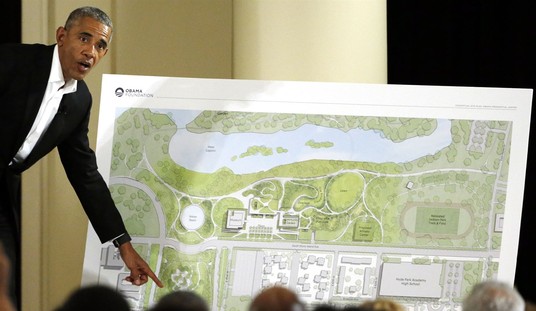The headline was, as headlines ought to be, an attention-grabber: “Deputies chasing armed suspects ordered to be more cautious.” Some questions immediately came to mind: If one is the cautious type, why would he have chosen to become a sheriff’s deputy in the first place? And at what cost does this increase of caution come, and who must pay it?
The story, by writers Andrew Blankstein and Richard Winton, appeared in last Thursday’s Los Angeles Times, and it concerned a new directive from Los Angeles County Sheriff Leroy Baca to his deputies. “In policing cultures around the nation, there is a tendency for us to put ourselves in harm’s way right away,” Baca told reporters gathered for a news conference at Sheriff’s Department headquarters last week. He wants his deputies to be more reluctant to place themselves in the line of fire. “You don’t have to go barreling in on every case and then find yourself in a position where you have no choice but to use your gun.”
Which may sound reasonable enough, as far as it goes, but in cities like Los Angeles, one must always be suspicious of political motivations behind any changes to law enforcement policy, no matter how reasonable they may sound on first hearing. And indeed in the Times story there are hints that there are reasons other than the safety of his deputies that has led Sheriff Baca to urge more caution when confronting suspects believed to be armed.
“The new tactical approach was recommended by a panel of veteran deputy training officers that Baca convened in September after a rash of shootings,” write Blankstein and Winton. “The sheriff said he asked the panel to answer a defining question in law enforcement: ‘If a person who you believe is armed runs from you, what should you do?’”
Thus Sheriff Baca seems to have concluded that his deputies have been involved in too many shootings, and that since he is powerless to regulate the conduct of those who present a threat to deputies, he must reduce the number of shootings by circumscribing the deputies’ response to those threats.
The sheriff’s new guidelines are encapsulated in a 30-page booklet titled “Split-second Decision, The Dynamics of the Chase in Today’s Society” (available online in pdf format here). The booklet serves as a useful primer on issues surrounding the use of deadly force by police officers, including the applicable California and federal laws. And it presents a series of actual scenarios in which Los Angeles deputy sheriffs were suddenly forced to make life-or death decisions. Reading through the booklet was at times spine-chilling for me, for it brought back memories of experiences of my own that were similar to some of those presented. No matter how many cop movies you may have seen or how many police procedurals you may have read, until you have experienced it you will never know quite how it feels to be suddenly confronted by a person you believe is trying to kill you.
But the sheriff’s booklet makes a worthy attempt to put the reader in the deputies’ shoes. The actions the deputies took in these situations were critiqued, and in some cases the decisions they made were found wanting, most often because the deputies, in the opinion of their superiors, acted hastily and without pausing to consider safer alternatives.
Sheriff Baca instructs his deputies to be “cautiously persistent in performing his/her duties.” Which is fine just so long as persistence is not subordinated entirely to caution. When responding to a potentially violent situation, the most cautious option of course is to make sure you arrive well after it’s over. But when the perception exists that police officers are reluctant to engage a neighborhood’s criminals, those criminals are further emboldened to prey on their fellow citizens. Put the sheepdog on a leash and the wolf is free to ravage the flock.
For example, the booklet’s first scenario, “L.A. Heat,” involves a deputy who responded to a report of a robbery and quite unexpectedly found herself confronting the suspect. The deputy, working alone, broadcast her location and requested assistance as she chased the suspect on foot. When the suspect entered an abandoned apartment building, the deputy followed him inside and began searching. She found the suspect hiding in a closet, his hands extended toward her and holding a shiny object. Believing the suspect was about to shoot her, the deputy shot and wounded the suspect.
As it turned out, the shiny object was not a gun but rather a pair of pliers. The suspect told investigators that he wanted to be killed by police rather than return to prison for the robbery he had just committed. The deputy was faulted for her actions, with a review panel concluding that “it would have been safer for all concerned if the deputy had contained the abandoned apartment building and waited for additional resources, rather than entering alone.”
And indeed it would have been safer, not necessarily for all concerned but certainly for the suspect, who might easily have escaped while the lone deputy attempted to contain an entire apartment building. At best, a single officer can see only two sides of a building, allowing a suspect an escape route on either of the other two. Yes, the deputy placed herself at risk by entering the building, but she would have placed others at risk — the suspect’s subsequent victims, to be sure — by being cautious and waiting for backup while the suspect escaped.
In another scenario, “Zero to Sixty,” two deputies were searching for a bag of drugs thrown from a car involved in an ongoing pursuit. They were approached by a woman who told them she had overheard her cousin planning a drive-by shooting. The woman described her cousin and his car, and soon the deputies spotted him driving. The suspect crashed the car, then got out and ran while holding a gun. A deputy shot the suspect after rounding a corner to find the suspect crouched and aiming a gun at him.
As in the first case, the deputy was faulted for his tactics. “Upon seeing the potential drive-by shooting suspect,” says the booklet, “the deputies should have considered coordinating assisting units and requesting air support [i.e. a police helicopter].” And maybe they did consider these options, but as the scenario was presented there was a pursuit in progress, and in all likelihood those deputies, having agreed to look for the drugs discarded by the suspect being chased, were the only two not involved in that pursuit miles away. It is also likely that the only sheriff’s helicopter in the area was the one flying over the pursuit and therefore not available. Had those deputies not acted as they did, the suspect may well have escaped and carried out the shooting he was reportedly planning. No police officer worthy of the title wants to live with the knowledge that some innocent person was harmed because the officer, out of fear for his own safety, failed to act.
In Graham v. Connor, decided by the U.S. Supreme Court in 1989, the Court held that “[t]he ‘reasonableness’ of a particular use of force must be judged from the perspective of a reasonable officer on the scene, rather than with the 20/20 vision of hindsight. … The calculus of reasonableness must embody allowance for the fact that police officers are often forced to make split-second judgments — in circumstances that are tense, uncertain, and rapidly evolving — about the amount of force that is necessary in a particular situation.”
Put a group of cops together and they can devise any number of ways in which a police shooting might have been avoided if the involved officers had exercised more caution and used different tactics. What they cannot do is say with certainty that some other outcome, one just as bad or even worse, might have come about if that suspect had not been expeditiously confronted and his threatening behavior halted.
It’s all well and good to preach caution to police officers, but they are often faced with situations in which the choice, to be made in an instant, is between bad and really bad. None of this is to say that police officers do not occasionally make mistakes for which they should be retrained and even sometimes punished, but if they wanted to be safe they never would have pinned on the badge.










Join the conversation as a VIP Member